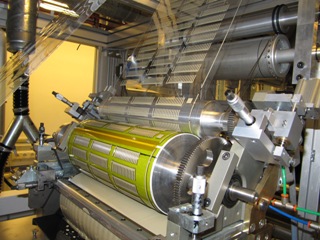Apr 16 2015
VTT has developed a method for printing memory circuits directly, e.g. onto consumer packaging. Because the required production technology is quite simple, no major investments are required.

The write-once-read-many (WORM) memories can be fabricated directly on the product or packaging using flexographic or inkjet printing machines, common in the packaging industry.
The memory is based on sintering of metallic nanoparticles using an electric current. A low voltage of a few volts is sufficient for the writing of the memory. Because the sintering of nanoparticles is non-reversible, the data content of the memory can only be written once.
VTT researchers envisage uses for inexpensive WORM memories in sensor applications, product originality marking, playing cards, interactive packaging and product information cards (e.g. user surveys).
"We expect massive growth from printed electronics, printed memories being a part of this sector. There are many applications for printed memories in Internet of Things and gaming fields to link the virtual and physical worlds. At VTT, we are developing methods that are tested and ready for industrialization," says Raimo Korhonen, Head of Research Area at VTT.
VTT is searching for a partner to commercialise the method patented by VTT.